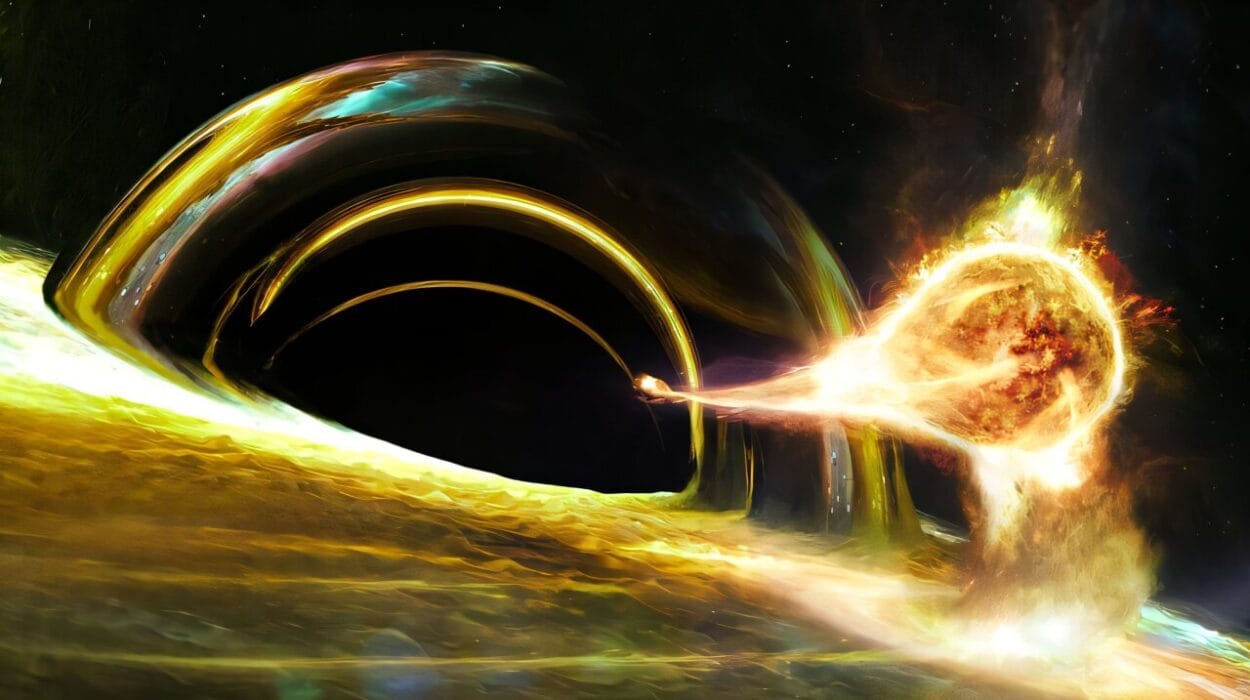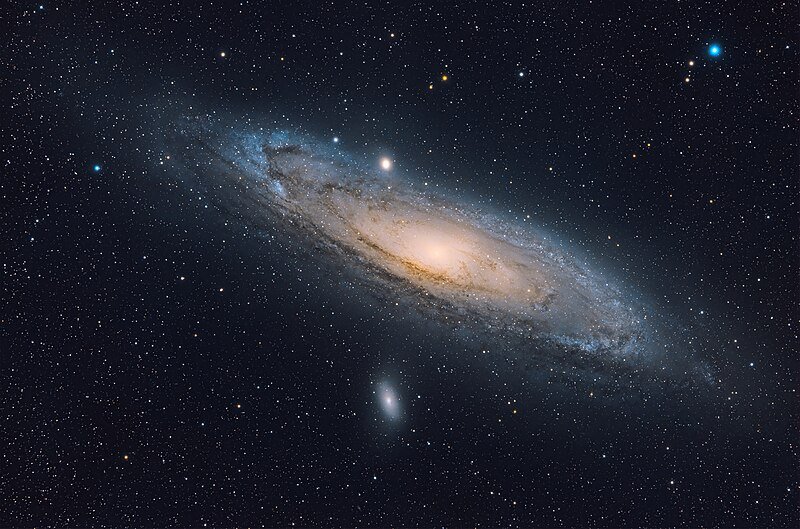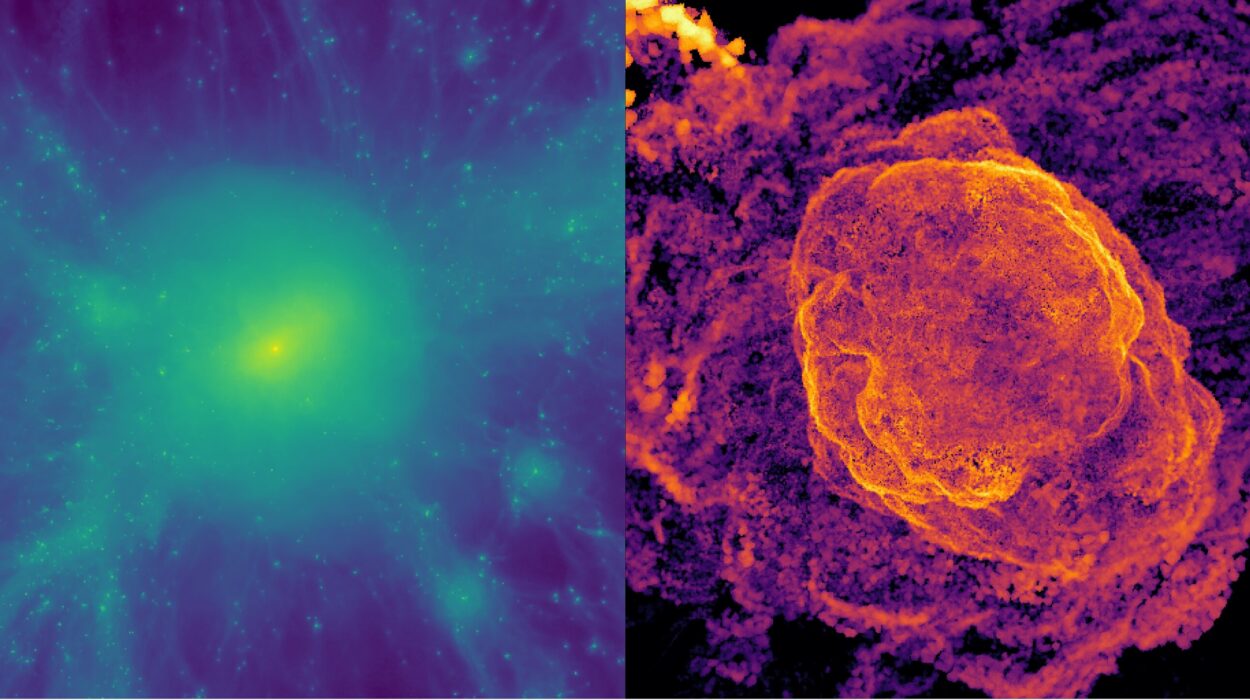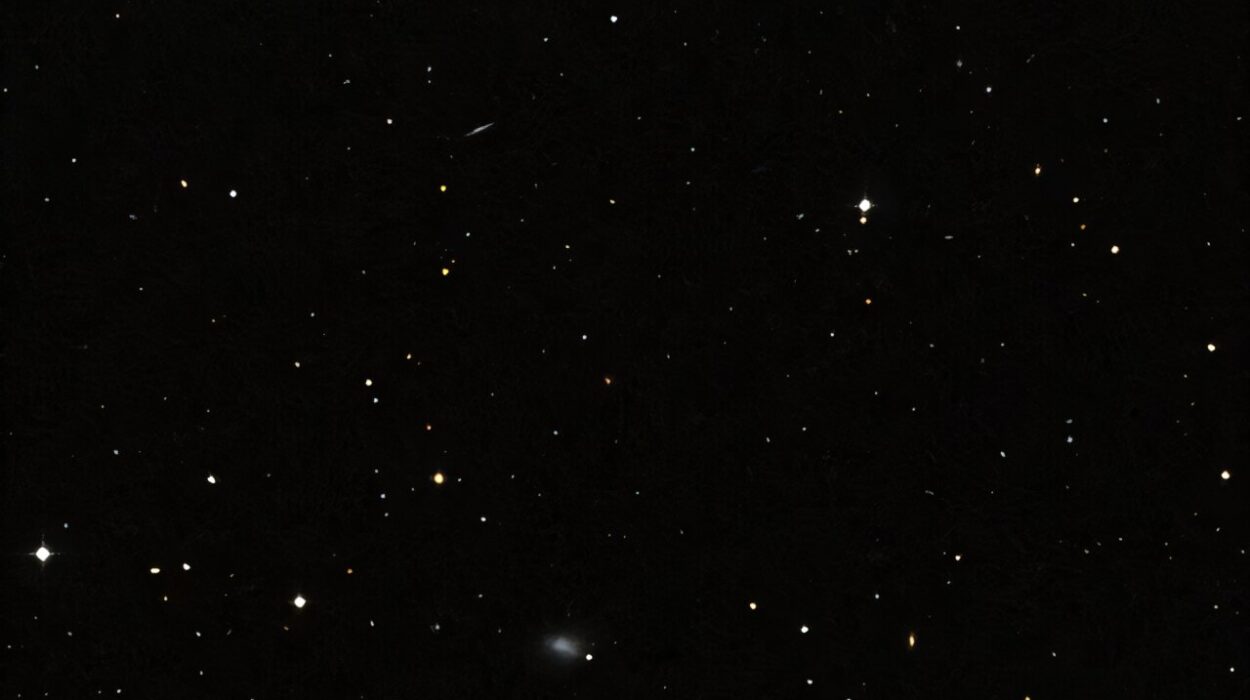For most of human history, the night sky was the ceiling of our dreams. Ancient stargazers mapped the heavens in wonder, weaving gods and monsters into the tapestry of stars. With time, telescopes replaced mythology, and we began to peer deeper into the cosmos—not only into its expanse but into its meaning. Newton gave us gravity. Einstein gave us relativity. Hubble gave us expansion. Yet, for all our progress, we have discovered a cosmic paradox.
The more we learn, the more we realize how little we truly understand.
In a universe bursting with galaxies, nebulae, and light, what we can actually see—stars, planets, gas clouds—makes up less than 5% of everything that exists. The rest is invisible, intangible, and almost entirely unknown. Roughly 27% of the universe is made up of something called dark matter, and about 68% is something even stranger: dark energy.
Together, they form the invisible scaffolding and driving force behind everything we know. And yet, they elude our grasp, like shadows flickering just beyond the reach of a flame. Unraveling the mystery of dark matter and dark energy is more than a scientific puzzle—it is a journey into the very soul of the cosmos.
Shadows that Shape the Stars
The story of dark matter begins not with an explosion or a telescope, but with a question—why do galaxies behave the way they do?
In the 1930s, Swiss astronomer Fritz Zwicky was studying the Coma Cluster, a massive group of galaxies over 300 million light-years away. He noticed something peculiar: the galaxies were moving far too quickly. Based on Newtonian physics, their velocities should have caused them to fly apart, as though centrifugal force were tearing them from the cluster’s grip.
Yet they remained bound together, as if an invisible hand were holding them in place.
Zwicky proposed the existence of what he called “dunkle Materie,” or dark matter—an unseen substance exerting gravitational influence. His idea was radical and largely ignored at the time. After all, who would believe in matter that doesn’t emit, reflect, or absorb light?
But decades later, in the 1970s, Vera Rubin’s work on the rotation curves of galaxies would confirm Zwicky’s suspicion. As she studied the speed of stars orbiting the centers of spiral galaxies, she expected to see the velocities drop off with distance—like planets in our solar system orbiting slower the farther they are from the sun. But that’s not what she found.
Stars on the outer edges of galaxies were moving just as fast as those near the center. Something unseen was providing the extra gravitational pull. Something massive. Something dark.
Rubin’s careful, methodical work sealed the case for dark matter. It wasn’t a theory anymore—it was an observation, backed by data. Still invisible, still mysterious, but undeniably there.
A Silence That Screams
Dark matter doesn’t shine, doesn’t burn, doesn’t interact with electromagnetic forces. It slips through ordinary matter like ghosts through walls. We can’t see it, touch it, or trap it—but we can see its fingerprints.
It warps space itself, bending the path of light in a phenomenon known as gravitational lensing. It slows the movement of galaxies, cradling them like invisible hands. It shapes the large-scale structure of the universe, dictating how clusters form and how matter clumps together.
Its presence is undeniable, but its identity remains elusive.
Is dark matter made of some yet-undiscovered particle? Perhaps a Weakly Interacting Massive Particle (WIMP)? Or something more exotic like axions or sterile neutrinos? Are we on the brink of a new form of physics—one that lies beyond the Standard Model?
Or—and this haunts the edges of scientific imagination—is dark matter not matter at all, but a sign that our understanding of gravity is flawed?
Physicists around the world have built detectors deep underground, shielded from radiation, hoping for the faintest whisper of a dark matter particle colliding with atomic nuclei. So far, the silence has been deafening.
Yet the search continues, not out of stubbornness, but because every galaxy we see shouts that something is missing. The silence, paradoxically, screams.
The Expanding Mystery of Dark Energy
If dark matter was an enigma born from unexpected movement, dark energy was a mystery born from unexpected stillness—or rather, from a force too powerful to ignore.
In 1998, two independent teams of astronomers—one led by Saul Perlmutter, the other by Brian Schmidt and Adam Riess—set out to measure the rate at which the universe was slowing down. After all, the Big Bang had hurled galaxies outward in every direction. Gravity should have been putting on the brakes.
But as they studied distant Type Ia supernovae—brilliant explosions that serve as “standard candles” in cosmology—they discovered something astonishing: the universe wasn’t slowing down.
It was speeding up.
Something was causing the expansion of the universe to accelerate. Something vast, uniform, and utterly strange. This unknown force was given a name: dark energy.
If dark matter acts like gravity’s invisible hand, dark energy is its opposite. It’s the force that pushes space apart, stretching the very fabric of the cosmos. Einstein had once included a “cosmological constant” in his equations to balance gravity—he later called it his greatest blunder. But it turned out that the universe may have written his forgotten term back in.
The Void Between the Stars
Imagine the universe as a balloon. In its early stages, it inflated rapidly. Then gravity tried to slow it down, like the rubber resisting air. But somewhere along the way, a new force—the dark energy—began pushing outward harder and harder. Now, the balloon isn’t just inflating. It’s accelerating.
What is dark energy? Is it a property of space itself, as Einstein suggested? Is it a dynamic field, evolving over time? Or is it the first sign that the true laws of physics still lie hidden beneath layers we haven’t yet peeled away?
If dark matter is a puzzle of presence—something we can’t see but that clearly exists—then dark energy is a puzzle of absence. It is the energy of the void, the pressure in the silence between stars.
We know it’s there because of the way galaxies are flying apart, faster and faster. But what it is—why it exists, what created it, how it might end—it all remains locked behind a door we haven’t yet found the key to.
The Battle Between Gravity and Expansion
Cosmology has become the story of two invisible titans locked in an eternal struggle. On one side, dark matter, pulling everything together, shaping galaxies and anchoring structure. On the other, dark energy, driving the universe apart, accelerating space itself into deeper and deeper isolation.
Who will win?
If dark energy continues its current dominance, galaxies will drift farther from each other, stars will burn out, and the universe could end in a “Big Freeze”—a cold, dark stillness where entropy reigns and no new light is born.
But some models suggest something more violent: a Big Rip, in which dark energy grows stronger over time, eventually tearing galaxies, stars, planets, and even atoms themselves apart.
Or perhaps, just perhaps, dark energy will decay, reversing its influence, leading to a cosmic contraction—a “Big Crunch.”
The truth is, we don’t yet know. But our fate, and the fate of everything we love, hinges on what dark energy truly is.
The Hunt Beneath the Earth and Across the Stars
In a quiet mine deep beneath the Gran Sasso mountains in Italy, tanks of ultra-pure liquid xenon sit in patient darkness. Their purpose is singular, almost sacred: to catch the tiniest ripple from an invisible ghost.
This is the XENONnT experiment, one of the most sensitive dark matter detectors in the world. Shielded from cosmic rays by rock and earth, it lies in wait for a single particle of dark matter—perhaps a WIMP—to collide with an atom and release a detectable flash of light.
In the United States, South Korea, Canada, and China, similar experiments tick away, waiting. These detectors do not aim to observe an event every second, or even every year. They aim to observe an event—any event—ever.
The search for dark matter is one of the most ambitious efforts in modern physics, and its silence is deafening. Some physicists whisper that WIMPs may not exist, that the true particles are lighter, weirder, or part of an entirely different model of physics.
Others turn to colliders, like CERN’s Large Hadron Collider, smashing protons together at near light-speed in the hope that, just maybe, something will break the symmetry and reveal the dark sector. Some look to axions, hypothetical particles that would explain both dark matter and certain quirks in quantum chromodynamics.
Astronomers also chase clues in the heavens. The Vera C. Rubin Observatory—named for the woman who helped reveal dark matter to the world—is designed to map the sky with exquisite precision. Its data may show subtle signs of dark matter’s influence or even something stranger: cracks in the way gravity behaves across cosmic scales.
For dark energy, the tools are even more vast. Satellites like Euclid, DESI, and the Nancy Grace Roman Space Telescope will map the acceleration of the universe with exquisite detail, tracing the expansion across billions of years.
These instruments will either confirm that dark energy is constant—or reveal that it changes, evolves, or hides deeper truths.
Science has reached into the very architecture of the universe with trembling hands, like blind cartographers tracing the contours of a cathedral by touch.
The Limits of Our Language
Science thrives on precision, but the mysteries of dark matter and dark energy push the boundaries of even our most refined vocabulary.
What do we call something that has mass, but emits no light? Something that defines structure, but leaves no trail? Something that fills the vacuum, yet cannot be touched or seen? The words “dark matter” and “dark energy” are placeholders—signposts in fog.
We don’t truly know what they are. We only know what they are not.
This linguistic poverty reflects a deeper epistemic challenge. When we talk about dark energy, are we referring to a substance? A property? A field? A flaw in our models?
Perhaps the most uncomfortable truth is this: we may be fundamentally unequipped, cognitively and technologically, to fully grasp what these entities are.
But human curiosity is not so easily deterred. Our inability to explain the cosmos has never stopped us from trying. That is the genius—and the tragedy—of our species.
Echoes of Einstein, Whispers of the Future
Einstein once said, “The most incomprehensible thing about the universe is that it is comprehensible.” But the mysteries of dark matter and dark energy strain even that optimism.
And yet, they also point the way forward.
If we can unlock their secrets, we might not just refine our understanding of the universe—we might rewrite the foundations of physics itself.
Some physicists suggest dark energy could be explained by quintessence, a dynamic field evolving over time. Others propose a “phantom energy” scenario, where the pressure of dark energy exceeds all known forms of repulsion.
In the realm of dark matter, some turn to supersymmetry, a theory that posits each particle has a hidden partner. Others explore the possibility that dark matter is composed not of particles at all, but of primordial black holes formed in the earliest moments of the universe.
Still others propose modifications to gravity itself—ideas like MOND (Modified Newtonian Dynamics), which aim to explain galactic rotation curves without invoking unseen mass.
But each theory carries its own wounds, its own contradictions. Each answer births new questions.
This is the frontier—not a place on a map, but a space in the mind. A silence that demands we listen harder.
The Emotional Weight of Cosmic Ignorance
For all our scientific instruments, the mysteries of dark matter and dark energy remain deeply personal. They challenge not just our knowledge, but our identity.
We live in a universe where 95% of reality is invisible to us. Imagine discovering that everything you’ve ever touched, every memory you’ve ever formed, every star you’ve ever seen—exists in just a sliver of what’s really there.
It is both humbling and haunting.
It evokes a sense of awe bordering on fear, a kind of cosmic vertigo. We are not the masters of reality, but stowaways on a vessel whose construction we don’t understand.
And yet, in that very humility, there is beauty.
To admit ignorance is to open the door to wonder. To accept mystery is to allow for discovery.
And so we look into the dark not with despair, but with longing. We search the sky not with fear, but with hope. We build detectors, launch satellites, write equations—not because we have all the answers, but because we are brave enough to ask.
Cosmic Faith and the Religion of Curiosity
In ancient times, humanity looked to the sky and saw gods, stories, patterns. We still do.
But now our myths are written in mathematics, our prayers whispered through radio telescopes, our sacred texts penned in peer-reviewed journals.
The pursuit of dark matter and dark energy is not just a scientific endeavor—it is a spiritual one.
It asks us to confront the limits of perception, to challenge our deepest assumptions, and to stretch the very framework of understanding. In the process, it invites us into a new kind of faith—not faith in a deity, but in the intelligibility of the cosmos.
Einstein’s “cosmic religion” lives on in every physicist who stares at a chalkboard in frustration, every astronomer who maps the void with trembling fingers. It is a religion of humility, curiosity, and awe.
Dark matter and dark energy remind us that we are not finished, not complete, not at the end of knowledge. They are the unsolved riddles at the edge of our story.
The Destiny Written in Darkness
The stakes are more than academic.
Dark energy is not just an intellectual puzzle. It is the force shaping our future. If it continues accelerating the universe, then our cosmic history is a tale with a chilling conclusion.
Galaxies will slip beyond our cosmic horizon, their light redshifting until it is forever unreachable. Eventually, only our own local group will remain visible. The universe will grow cold, lonely, and silent.
No new stars will form. No new galaxies will emerge. Over trillions of years, the lights will go out, one by one, until the universe becomes a sea of black holes and frozen remnants.
It is a sobering vision.
But perhaps, in understanding dark energy, we will learn how to change that fate. Perhaps we will harness its power. Perhaps we will understand enough to see past it, to bend the fabric of the cosmos to new forms of life, space, and thought.
Or perhaps we will simply accept it—and find joy in the brilliance of the now.
A Final Thought Before the Light Fades
Dark matter and dark energy are not just scientific concepts. They are reminders.
Reminders that the universe is still wild. That our maps are still incomplete. That mystery is not the enemy of truth, but its twin.
They tell us that the cosmos is bigger, stranger, and more beautiful than we imagined. And that we are still, gloriously, in the middle of the story.
Let us keep listening. Let us keep watching. Let us keep asking.
For in the dark, we find the light of our deepest questions—and in those questions, the fire of what makes us human.






